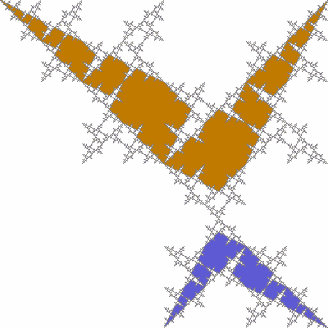cas/definition.php (people or term)

Open Scaffolds
A notion in Landscape Urbanism that relates to the notion of an environment's potentiality to be activated in different ways;
can be thought of as connecting to phase space in physics, or the space of possibilities
By definition, scaffolding is a supporting framework. Typically scaffolding is associated with building and construction, in which the same reusable scaffolding can be implemented to create a variety of different shapes and buildings. Ancient civilizations built using scaffolds and frameworks to build a variety of building typologies, from homes to cathedrals.
In the context of Complex Adaptive systems, an open scaffold provides a framework to work within, providing different parameters and affordances, in order to create an emergent and adaptive space. This creates a minor intervention of top down organization to start the project and put it in place, from which the actual development is fed from a bottom up organization flow. The scaffold is able to change as the information and inputs change. Depending on the system implemented in the open scaffold, these inputs and changes could be due to different agents or stigmeteries in the space, building upon one another to evolve the space.
One of the closest architectural proposals to this type of system is OMA's 1982 project entry for Parc de la Villette, in Paris. This version of the park allows for space usage to be determined by users, and creates overlapping use of space throughout time. The park does not subscribe to traditional planning practices and programming of space and has many affordances to meet the needs and wants of the agents in the space. Space can be used as a tennis court or basketball court, or overlap space without necessarily being dedicated to one program.Another project that illustrates the idea of open scaffolds is The Zero Star Hotel by the Why Factory. The structure is made up of individual units of blocks, or agents, which are made to shift around within a framework, based on a set of inputs given, to create changing and adaptive spaces for users.
Open scaffolds create a space of endless possibilities, as determined by users. It is different from an entire blank space of an open warehouse, in that there are nudges in the environment, hinting to users what the space could be, usually an agent that can move in the space. Designers tend to design open space for the possibility of flexible space, however users without any clues in the environments tend to default to certain arrangements, never really making it a fully flexible space. Open scaffolds push users past the societal normative uses of space than an open blank slate room does.
Related Terms:
Cite this page:
Wohl, S. (2022, 18 May). Open Scaffolds. Retrieved from https://kapalicarsi.wittmeyer.io/definition/open-scaffolds
Open Scaffolds was updated May 18th, 2022.
Nothing over here yet
Navigating Complexity © 2015-2025 Sharon Wohl, all rights reserved. Developed by Sean Wittmeyer
Sign In (SSO) | Sign In
Related (this page): Non-Linearity (26), Landscape Urbanism (15), Degrees of Freedom (78),
Section: terms
Non-Linearity Related (same section): Related (all): Urban Modeling (11, fields), Resilient Urbanism (14, fields), Relational Geography (19, fields), Landscape Urbanism (15, fields), Evolutionary Geography (12, fields), Communicative Planning (18, fields), Assemblage Geography (20, fields), Tipping Points (218, concepts), Path Dependency (93, concepts), Far From Equilibrium (212, concepts),
Nested Orders Related (same section): Related (all): Urban Modeling (11, fields), Urban Informalities (16, fields), Resilient Urbanism (14, fields), Self-Organized Criticality (64, concepts), Scale-Free (217, concepts), Power Laws (66, concepts),
Emergence Related (same section): Related (all): Urban Modeling (11, fields), Urban Informalities (16, fields), Urban Datascapes (28, fields), Incremental Urbanism (13, fields), Evolutionary Geography (12, fields), Communicative Planning (18, fields), Assemblage Geography (20, fields), Self-Organization (214, concepts), Fitness (59, concepts), Attractor States (72, concepts),
Driving Flows Related (same section): Related (all): Urban Datascapes (28, fields), Tactical Urbanism (17, fields), Relational Geography (19, fields), Parametric Urbanism (10, fields), Landscape Urbanism (15, fields), Evolutionary Geography (12, fields), Communicative Planning (18, fields), Assemblage Geography (20, fields), Open / Dissipative (84, concepts), Networks (75, concepts), Information (73, concepts),
Bottom-up Agents Related (same section): Related (all): Urban Modeling (11, fields), Urban Informalities (16, fields), Resilient Urbanism (14, fields), Parametric Urbanism (10, fields), Incremental Urbanism (13, fields), Evolutionary Geography (12, fields), Communicative Planning (18, fields), Rules (213, concepts), Iterations (56, concepts),
Adaptive Capacity Related (same section): Related (all): Urban Modeling (11, fields), Urban Informalities (16, fields), Tactical Urbanism (17, fields), Parametric Urbanism (10, fields), Landscape Urbanism (15, fields), Incremental Urbanism (13, fields), Evolutionary Geography (12, fields), Feedback (88, concepts), Degrees of Freedom (78, concepts),
